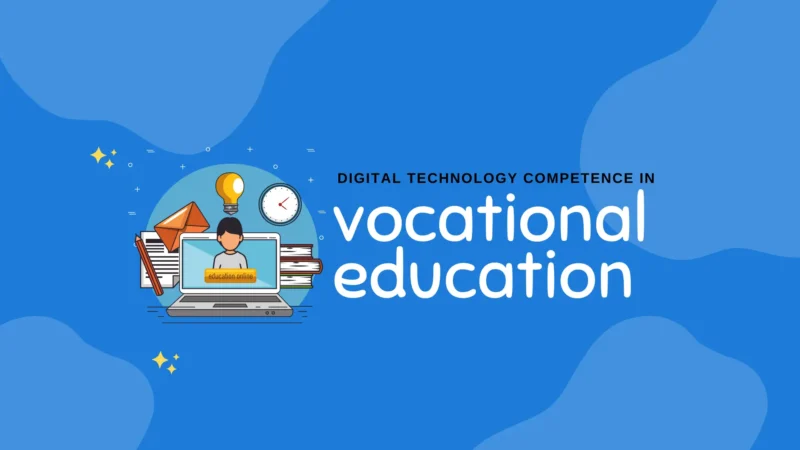The maturity level of digital technology competence (DTC) in vocational education was analyzed by Astuti et al. (2022) to measure the difference between teachers and students in mastering DTC. They conducted research in public and private vocational schools in Yogyakarta, Indonesia, with a total of 233 respondents. Data were collected using a Likert scale questionnaire and analyzed using descriptive statistics and inferential statistics with one-way analysis of variance (ANOVA). The results showed that the maturity level of vocational education teachers was in the “Low” category, with a score of 13.16-23.68, and vocational education students were also in the “Low” category, with a score of 12.98-22.12. There is no significant difference in the maturity level between teachers and students.
What are the implications of low levels of DTC maturity in vocational education?
Low digital technology competency in vocational education can have several negative implications.
- Teachers and students may have difficulty adapting to new technologies, making it difficult for them to compete and keep their knowledge up to date.
- Inefficient use of technology may occur due to a lack of understanding of digital tools. This will lead to a waste of time and resources.
- Low maturity levels can limit innovation opportunities for teachers and students, hindering their development and success.
- Individuals with low maturity levels in digital technology competencies may face difficulties finding jobs or advancing their careers in a job market requiring digital skills.
- Low maturity levels may also hinder working together effectively using digital tools.
Therefore, teachers and students in vocational education need to improve their digital technology capabilities in order to adapt and successfully apply technology in teaching and learning activities.
What are the benefits of improving DTC in vocational education?
Improving digital technology competencies in vocational education has many benefits. Individuals with high digital skills will become more competitive and attractive to employers. Teachers and students with good digital technology competencies can use digital tools more effectively, increasing efficiency and productivity. High digital technology competence enables teachers and students to develop innovative learning solutions and approaches. With better DTC, teachers and students can work together more effectively in learning, creating a more productive environment. Individuals with high DTC will be better equipped to keep up with the latest technological developments. Digital technology competency can improve critical thinking and problem-solving skills. Furthermore, higher digital technology competence will create a more engaging and effective learning experience for teachers and students.
The study concludes that both teachers and students in vocational schools need to improve their digital technology capabilities to reach the level of technology critics. This means that they must have the ability to critically evaluate and adapt to new technologies in their field, which is crucial to staying competitive and up-to-date in the rapidly evolving digital landscape.
The maturity levels of the digital technology competence in vocational education
Melinda Astuti, Zainal Arifin, Muhammad Nurtanto, Farid Mutohhari, Warju Warju
This study aimed to analyze the maturity level of teachers and vocational students. It also measured differences in the maturity level of teachers and vocational students in mastering the digital technology competence (DTC) in vocational education. Quantitative research used a design developed by Hoy and Adams. A total of 233 respondents came from public and private schools in vocational schools in Yogyakarta, Indonesia. Data was collected using a Likert scale questionnaire (1-4). The data were analyzed by descriptive statistics and inferential statistics with one-way analysis of variance (ANOVA). The results on the maturity level of vocational teachers obtained a score of 13.16-23.68 in the “Low” category and for vocational students obtained a score of 12.98-22.12 in the “Low” category, and there was no significant difference. Teachers and students in vocational schools must have awareness in improving digital technology capabilities at the criticism technology level.
By: I. Busthomi

